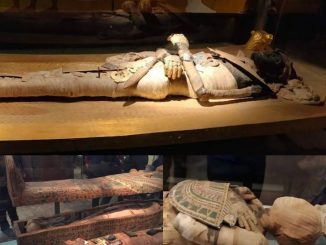In the annals of history, certain artifacts transcend their material value to become symbols of power, prestige, and mystique. Among these treasures, none shine brighter than the Talisman of Charlemagne. Crafted in the 9th century AD, this pendant, adorned with filigreed gold and an oval sapphire, has a history as rich and illustrious as the gems that adorn it. Gifted by the Caliph of Baghdad, Harun al-Rashid, to Charlemagne, this talisman is steeped in legend and lore, becoming an emblem of empires and a token of destiny. Join me as we delve into the captivating journey of this remarkable relic, from its origins to its current resting place in the Cathedral of Reims.
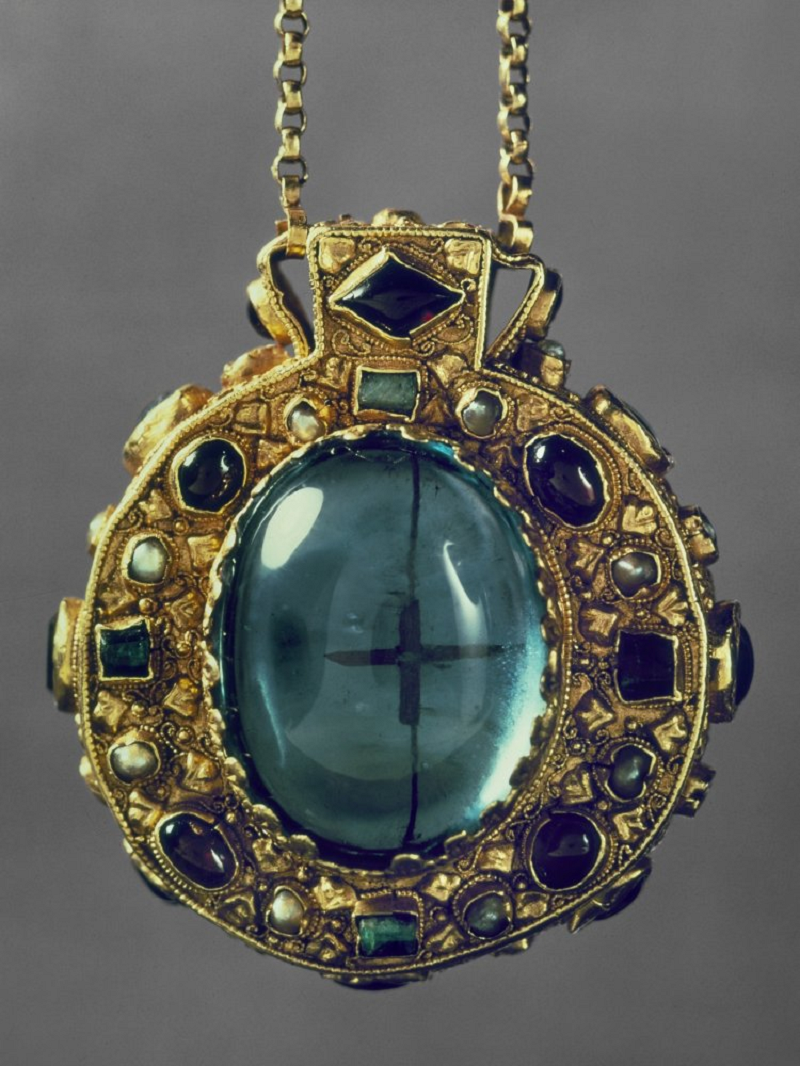
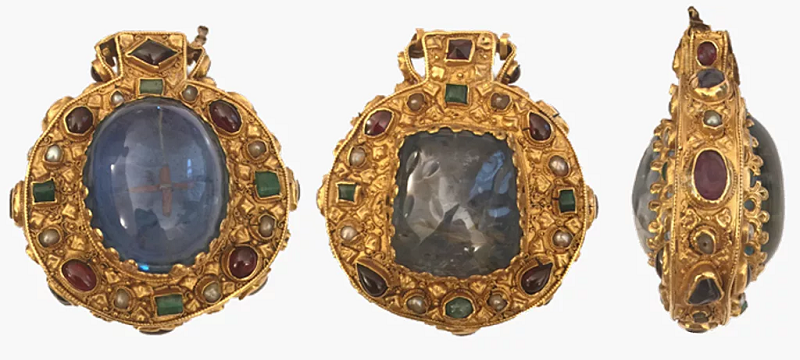
The tale of the Talisman of Charlemagne begins in the early 9th century AD, during the reign of the great Carolingian emperor, Charlemagne. It is said that the Caliph of Baghdad, Harun al-Rashid, bestowed this magnificent pendant upon Charlemagne as a symbol of friendship and alliance between their respective realms. Crafted with exquisite detail, the talisman features an oval sapphire cut into a cabochon, through which a relic can be seen, surrounded by 53 precious stones including pearls, garnets, amethysts, and emeralds.
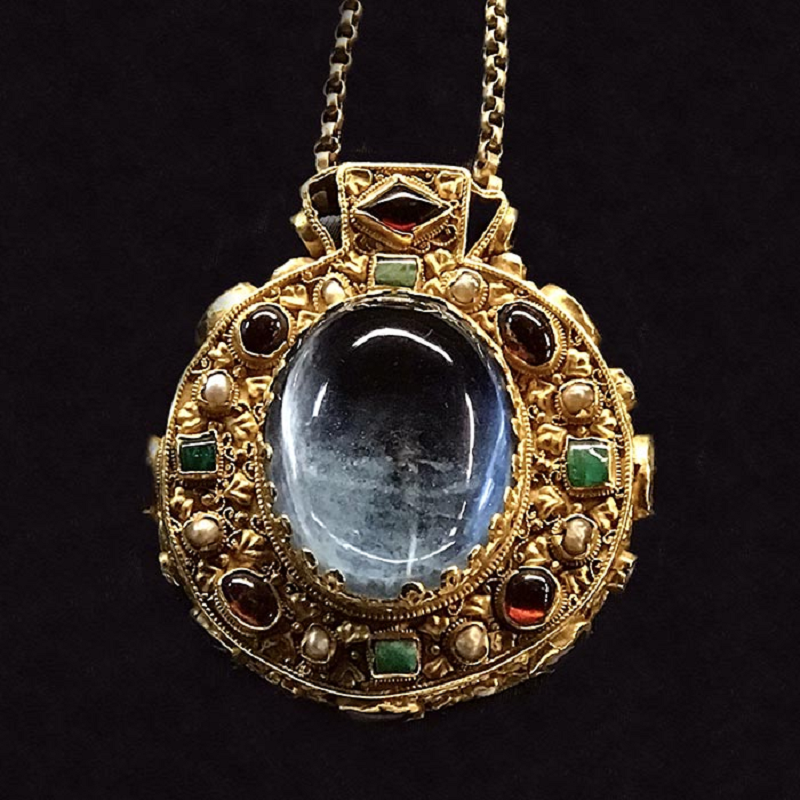
Charlemagne, recognizing the significance of this gift, wore the talisman on his chest throughout his life, considering it a source of protection and divine favor. Legend has it that he even expressed a desire to be buried with the talisman, so great was its importance to him.
However, fate had other plans for the talisman. In the year 1000 AD, Otto III, the Emperor of the Holy Roman Empire, had Charlemagne’s tomb opened and claimed possession of the talisman. From that moment on, it became a symbol of imperial authority, passing through the hands of successive rulers and dynasties.
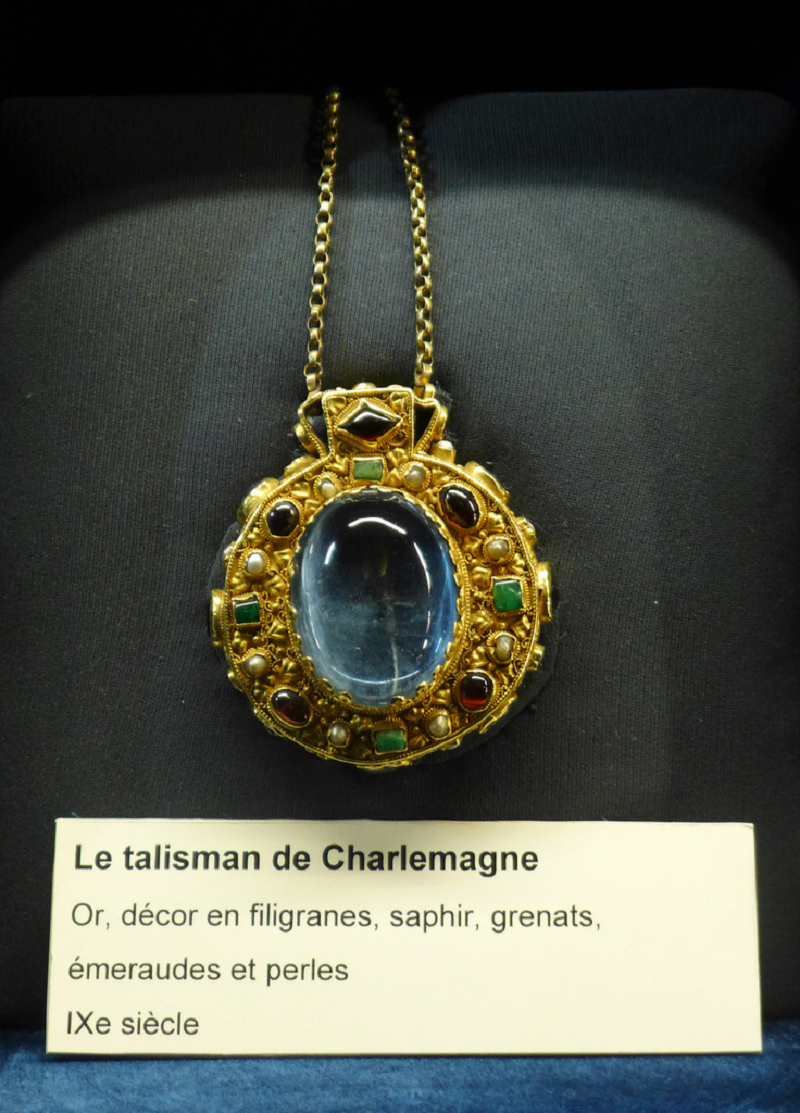
For centuries, the talisman remained within the hallowed walls of the cathedral of Aachen, a silent witness to the ebb and flow of history. Its gleaming presence invoked awe and reverence among all who beheld it, a tangible link to the legendary figures of the past.
In 1804, a pivotal moment in the talisman’s journey occurred when the bishop of Aachen donated it to Josephine Beauarnhais, the wife of Napoleon I. Josephine, herself a woman of refined taste and sophistication, cherished the talisman as a symbol of her own imperial aspirations. Upon her death, she bequeathed it to her daughter, Ortensia, who in turn passed it on to her son, Napoleon III, and his wife, Eugenia.
Finally, in a gesture of reverence and homage, Eugenia donated the talisman to the Cathedral of Reims, where it found its final resting place in the Tau Palace. Today, the talisman continues to captivate visitors with its timeless beauty and storied history, serving as a testament to the enduring legacy of Charlemagne and the empires he once ruled.

Conclusion
In the realm of archaeology, few artifacts possess the allure and mystique of the Talisman of Charlemagne. From its origins as a gift between monarchs to its journey through the corridors of power and prestige, this remarkable pendant has borne witness to centuries of human history. As it rests in the Cathedral of Reims, it serves as a tangible reminder of the grandeur and splendor of ages past, inspiring awe and wonder in all who gaze upon it. Truly, the saga of the Talisman of Charlemagne is a testament to the enduring power of relics to transcend time and space, weaving a tapestry of legend and legacy for generations to come.
